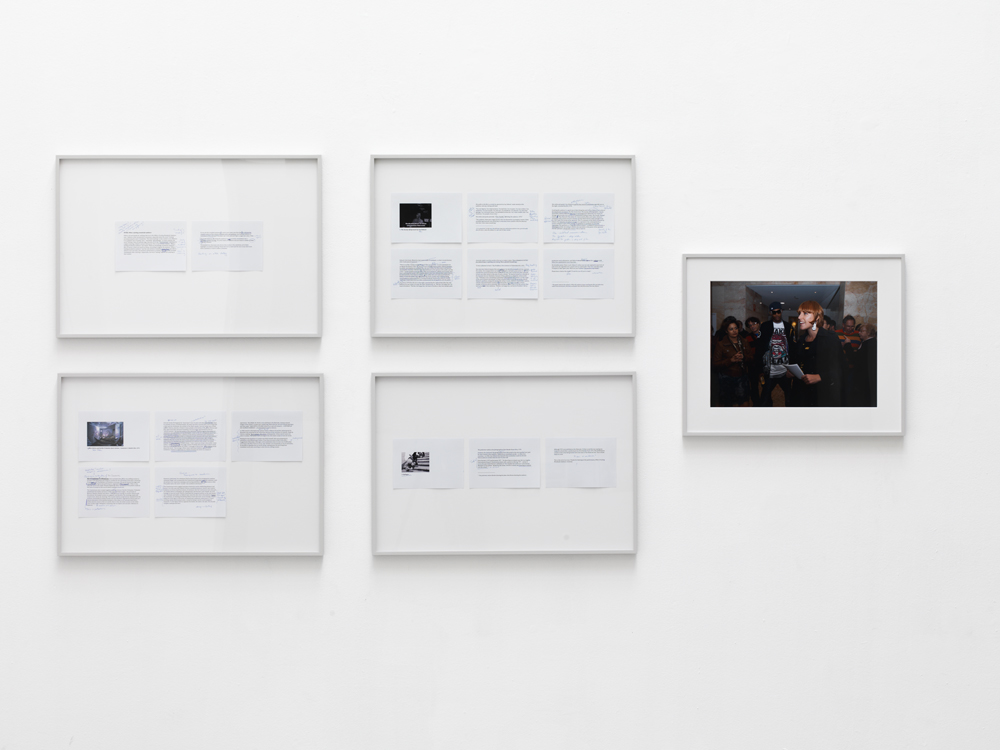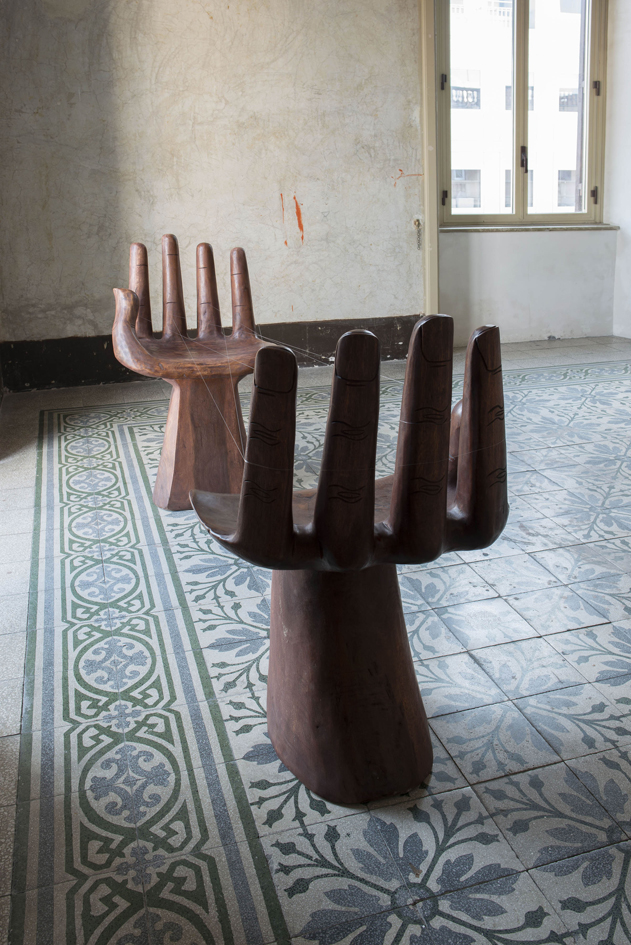Mimbres pottery kill hole sequence
- Installation (Installation)
Mariana Castillo Deball
Mariana Castillo Deball’s set of kill hole plates are part of a larger body of work problematizing archeological narratives, and drawing attention to the conservation process and its role in recreating an imagined object. They are playful and exaggerated representations of “kill hole pottery” — ceramic dishes in the Mimbres tradition with distinct circular holes located in the center of the pots. Although very little is known about the Mimbres culture’s specific beliefs, they are loosely understood to have terminated the object symbolically in preparation for funerary use. (A common belief is that kill holes served as a conduit to a spiritual world.) When these ceramics were first discovered, however, there was no scholarly precedent to explain the kill holes or differentiate them from the more common broken sherds of most ancient ceramics, so as a result hundreds of these pots were mistakenly repaired. It wasn’t until more kill hole ceramics were unearthed, and sufficient information was collected, that kill holes were understood as intentional absences, punched into the ceramics as a significant act of negation. Deball’s foregrounding of these pots in her recent project was meant to heighten the kind of leaps made around found artifacts through imagined realities, signaling the anxiety of Modernity—the irretrievable loss of information— and highlight the important work of responsibly decoding the gaps of information.
The practice of Mariana Castillo Deball (b. Mexico City, 1975) is centered on intensive research. In weaving together perceived facts and legends, the artist deconstructs how we understand tradition, liberating content from imposed ideological legacies. Mariana Castillo Deball’s collaborative research—in particular in the domain of science, geology, archaeology and literature—is manifested and synthesized into her multimodal sculptural practice. The archive is a significant aspect of the artist’s practice, whereby the research conducted in the creation of her sculptures is culminated, catalogued and preserved. Deball is not only interested in traces of the past, her multidisciplinary approach allows her to study the different ways in which a historical object can be read today.
Colors:
Related artist(s) to: Mariana Castillo Deball » Falke Pisano, » Dora GarcíA, » Will Holder, » Adriana Lara, » Claire Fontaine, » Danh Vo, » Dani Gal, » Douglas Gordon, » Erick Beltrán, » Frances Stark

© » KADIST
Claire Fontaine
2006Foreigners Everywhere is a series of neon signs in several different languages...

© » KADIST
Dora Garcia
2008Dora Garcia’s work is a result of institutional critique and more generally that of language, following the conceptual artists of the 1960s like Weiner and Kosuth and Fraser from the 1980s and 1990s...

© » KADIST
Erick Beltran
2010In his posters, prints, and installations, Erick Beltrán employs the language and tools of graphic design, linguistics, typography, and variations in alphabetical forms across cultures; he is specifically interested in how language and meaning form structures that can be misconstrued as universal...

© » KADIST
Dora Garcia
2012KLAU MICH is a TV and performance project by Dora García with Ellen Blumenstein, Samir Kandil, Jan Mech, TheaterChaosium, and Offener Kanal Kassel, during the 100 days of dOCUMENTA (13)....

© » KADIST
Douglas Gordon
1996In Monster (1996-97), the artist’s face becomes grotesque through the application of strips of transparent adhesive tape, typical of Gordon’s performance-based films that often depict his own body in action...

© » KADIST
Adriana Lara
2014Lara uses things readily at hand to create objects and situations that interrogate the processes of art and the spectrum of roles that art and artists play in society...

© » KADIST
Douglas Gordon
2004Douglas Gordon’s single-channel video The Left Hand Can’t See That The Right Hand is Blind, captures an unfolding scene between two hands in leather gloves—at first seemingly comfortable to be entwined, and later, engaged in a struggle...

© » KADIST
Douglas Gordon
2002Blind Spencer is part of the series “Blind Stars” including hundreds of works in which the artist cut out the eyes of Hollywood stars, in a symbolically violent manner...


